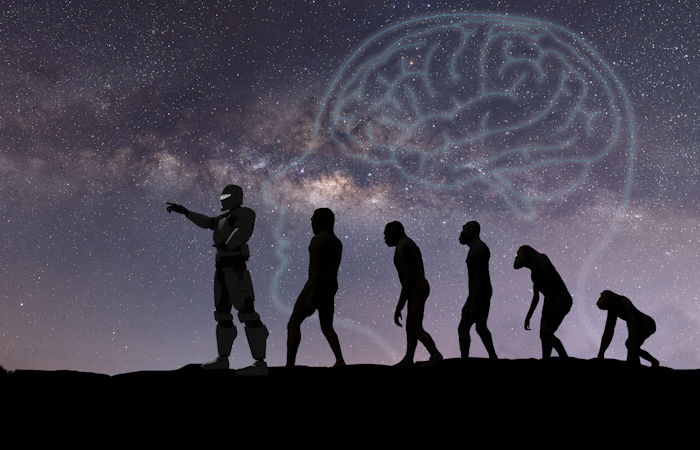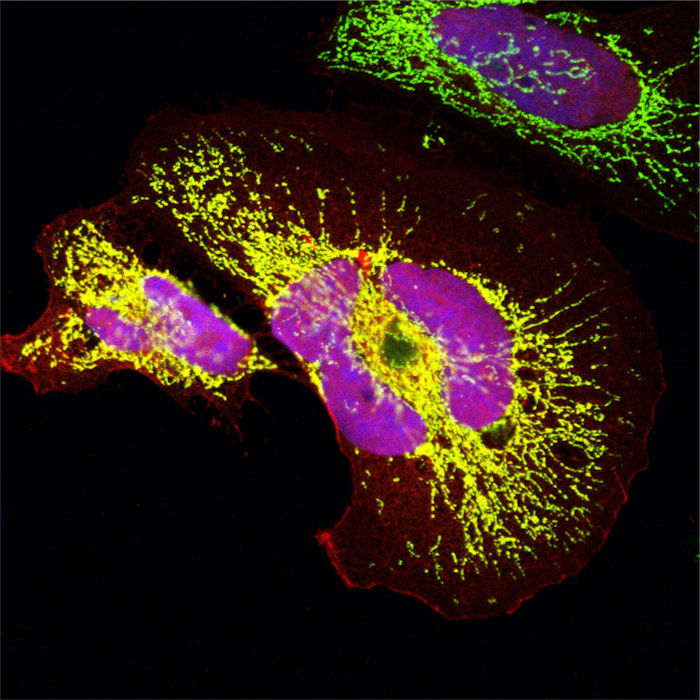Eddie Gonzales Jr. – AncientPages.com – Every biologist knows that small structures can sometimes have a big impact: Millions of signaling molecules, hormones, and other biomolecules are bustling around in our cells and tissues, playing a leading role in many of the key processes occurring in our bodies.

Credit: Adobe Stock – frank29052515
Yet despite this knowledge, biologists and physicians long ignored a particular class of proteins—their ᴀssumption being that because the proteins were so small and only found in primates, they were insignificant and functionless.
The discoveries made by Professor Norbert Hübner at the Max Delbrück Center and Dr. Sebastiaan van Heesch at the Princess Máxima Center for Pediatric Oncology in the Netherlands changed this view a few years ago. “We were the first to prove the existence of thousands of new microproteins in human organs,” says Hübner.
In a new paper published in Molecular Cell, the team led by Hübner and van Heesch now describe how they systematically studied these mini-proteins, and what they learned from them. “We were able to show which genome sequences the proteins are encoded in, and when DNA mutations occurred in their evolution,” explains Dr. Jorge Ruiz-Orera, an evolutionary biologist in Hübner’s lab and one of the paper’s three lead authors, who work at the Max Delbrück Center and the German Center for Cardiovascular Research (DZHK). Ruiz-Orera’s bioinformatic gene analyses revealed that most human microproteins developed millions of years later in the evolutionary process than the larger proteins currently known to scientists.
Yet the huge age gap doesn’t appear to prevent the proteins from “talking” to each other. “Our lab experiments showed that the young and old proteins can bind to each other—and in doing so possibly influence each other,” says lead author Dr. Jana Schulz, a researcher in Hübner’s team and at the DZHK. She therefore suspects that contrary to long-held ᴀssumptions, the microproteins play a key role in a variety of cellular functions. The young proteins might also be heavily involved in evolutionary development thanks to comparatively rapid “innovations and adaptations.”
“It’s possible that evolution is more dynamic than previously thought,” says van Heesch.
Proteins only found in humans
The researchers were surprised to find that the vastly younger microproteins could interact with the much older generation. This observation came from experiments performed using a biotechnical screening method developed at the Max Delbrück Center in 2017. In collaboration with Dr. Philipp Mertins and the Proteomics Platform, which the Max Delbrück Center operates jointly with the Berlin Insтιтute of Health at Charité (BIH), the mini-proteins were synthesized on a membrane and then incubated with a solution containing most of the proteins known to exist in a human cell. Sophisticated experimental and computer-aided analyses then allowed the researchers to identify individual binding pairs.
“If a microprotein binds to another protein, it doesn’t necessarily mean that it will influence the workings of the other protein or the processes that the protein is involved in,” says Schulz.
However, the ability to bind does suggest the proteins might influence each other’s functioning. Initial cellular experiments conducted at the Max Delbrück Center in collaboration with Professors Michael Gotthardt and Thomas Willnow confirm this ᴀssumption. This leads Ruiz-Orera to suspect that the microproteins “could influence cellular processes that are millions of years older than they are, because some old proteins were present in the very earliest life forms.”
Unlike the known, old proteins that are encoded in our genome, most microproteins emerged more or less “out of nowhere—in other words, out of DNA regions that weren’t previously tasked with producing proteins,” says Ruiz-Orera. Microproteins therefore didn’t take the “conventional” and much easier route of being copied and derived from existing versions. And because these small proteins only emerged during human evolution, they are missing from the cells of most other animals, such as mice, fish and birds. These animals, however, have been found to possess their own collection of young, small proteins.
The smallest proteins so far
During their work, the researchers also discovered the smallest human proteins identified to date. “We found over 200 super-small proteins, all of which are smaller than 16 amino acids,” says Dr. Clara Sandmann, the study’s third lead author. Amino acids are the sole building blocks of proteins. Sandmann says this raises the question of how small a protein can be—or rather, how big it must be to be able to function. Usually, proteins consist of several hundred amino acids.
The small proteins that were already known to scientists are known as peptides, and function as hormones or signal molecules. They are formed when they split off from larger precursor proteins. “Our work now shows that peptides of a similar size can develop in a different way,” says Sandmann. These smallest-of-the-small proteins can also bind very specifically to larger proteins—but it remains unclear whether they can become hormones or similar: “We don’t yet know what most of these microproteins do in our body,” says Sandmann.

The microprotein in the mitochondria (green) and in the nucleus (blue) was overexpressed in human cells. The yellow and pink areas show that the signal of the microprotein overlaps with the mitochondrial and nuclear signals. Credit: Clara Sandmann, Max Delbrück Center
Yet the study does provide an inkling of what the molecules are capable of: “These initial findings open up numerous new research opportunities,” says van Heesch. Clearly, the microproteins are much too important for researchers to keep ignoring them. Van Heesch says the biomolecular and medical research communities are very enthusiastic about these new findings.
One conceivable scenario would be “that these microproteins are involved in cardiovascular disease and cancer, and could therefore be used as new targets for diagnostics and therapies,” says Hübner.
Several U.S. biotech companies are already doing research in this direction. And the team behind the current paper also has big plans: Their study investigated 281 microproteins, but the aim now is to expand the experiments to include many more of the 7,000 recently cataloged microproteins—in the hope that this will reveal many as-yet-undiscovered functions.
The study was published in the journal Molecular Cell
Written by Eddie Gonzales Jr. – AncientPages.com – MessageToEagle.com Staff





